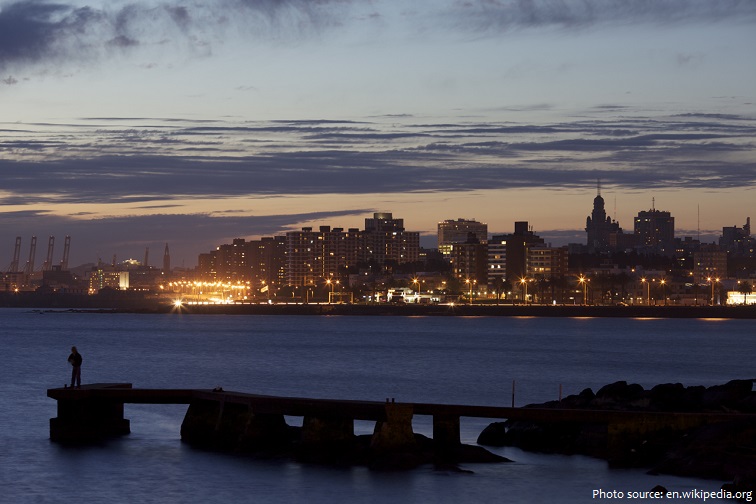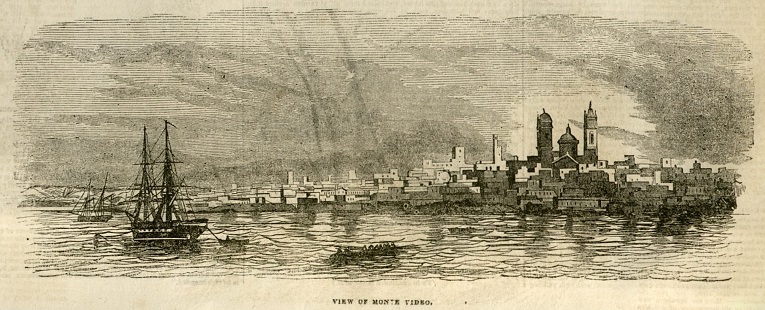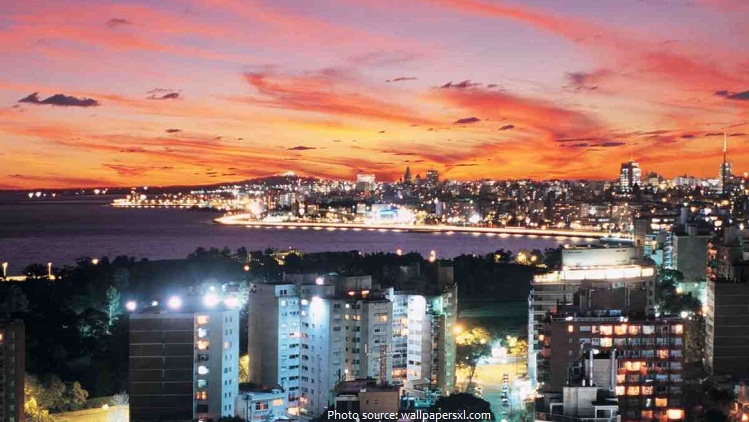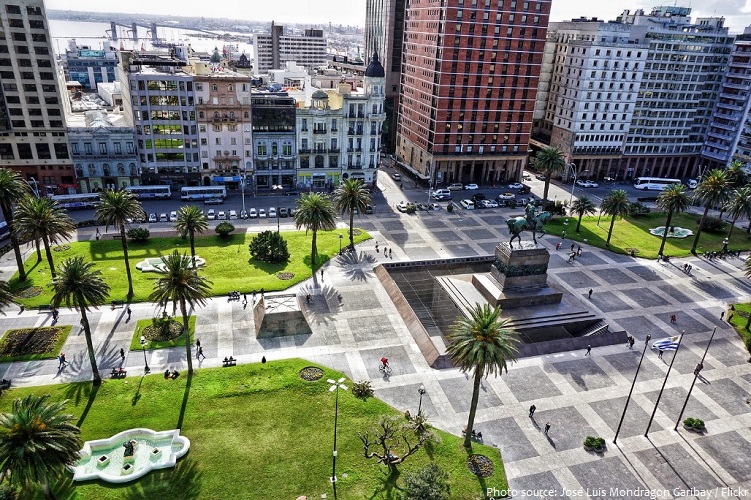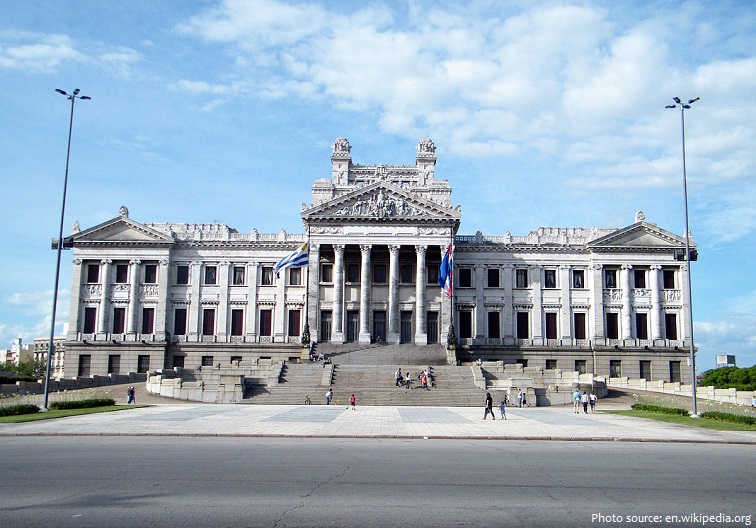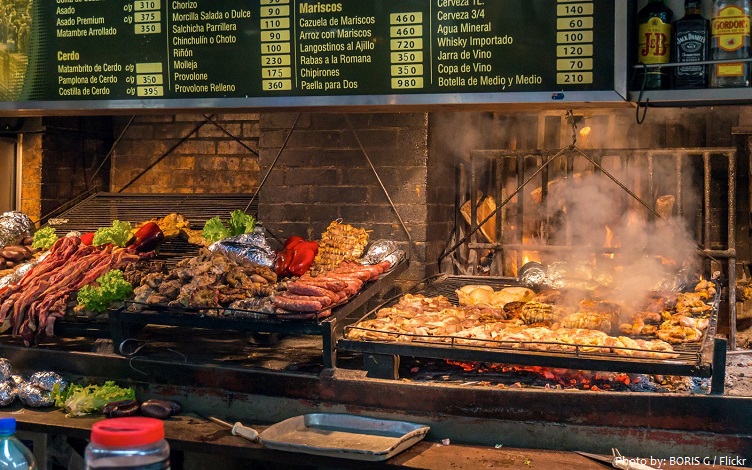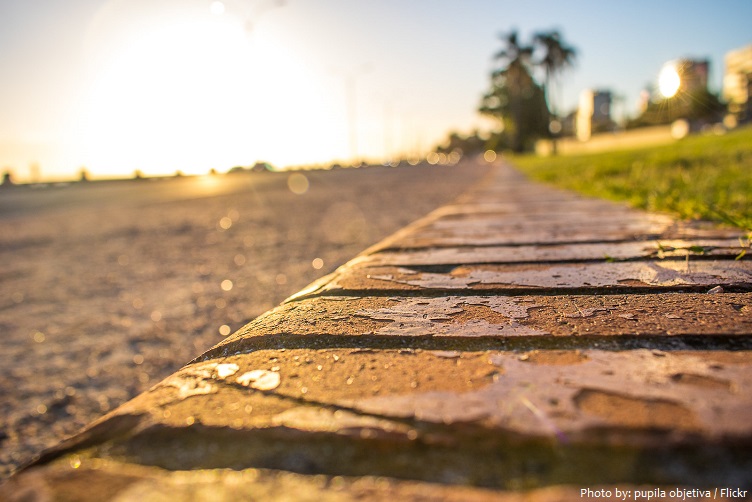Montevideo is the capital and largest city of Uruguay.
The city is situated on the north shore of the Río de la Plata, the arm of the Atlantic Ocean that separates the south coast of Uruguay from the north coast of Argentina.
As of August 2019, the population of Montevideo is about 1.8 million people.
Montevideo covers a total area of 201 square kilometers (77.5 square miles).
The city has average elevation of 43 meters (141 feet) above sea level. Its highest elevation is the peak of Cerro de Montevideo at a height of 134 meters (440 feet) above sea level.
Montevideo was established in 1724 by a Spanish soldier, Bruno Mauricio de Zabala, as a strategic move amidst the Spanish-Portuguese dispute over the platine region.
The city was named San Felipe y Santiago de Montevideo, later shortened to Montevideo.
During its early years, Montevideo was mostly a Spanish garrison town.
From 1807 to 1830 Montevideo was alternately occupied by British, Spanish, Argentine, Portuguese, and Brazilian forces, and its trade and population declined.
In 1828, the town became the capital of Uruguay. However, independence, which came in 1830, did not bring stability.
Rivalries between local inhabitants, Argentines, and Brazilians led to a nine-year siege of Montevideo by a combined Argentine-Uruguayan army from 1843 to 1851. French and English forces assisted Montevideo’s defenders by blockading Buenos Aires. The unexpected result was that Montevideo flourished during the siege and became the major port of the Río de la Plata.
In the early 20th century, many Europeans (particularly Spaniards and Italians but also thousands from Central Europe) immigrated to the city.
During the early 20th century, Uruguay saw huge social changes with repercussions primarily in urban areas. Among these changes were the right of divorce (1907) and women’s right to vote.
During World War II, a famous incident involving the German pocket battleship Admiral Graf Spee took place in Punta del Este, 200 kilometers (120 mi) from Montevideo. To avoid risking the crew in what he thought would be a losing battle, Captain Hans Langsdorff scuttled the ship on 17 December.
From the 1960s to the end of the dictatorship in 1985, around one hundred people died or disappeared because of the political violence.
Today, Montevideo is a vibrant, eclectic place with a rich cultural life.
The Plaza Independencia is the most important square in Montevideo. Several of the city’s most famous landmarks are located here, including the Palacio Salvo and the Teatro Solís. Dominating the heart of the formal square is the Artigas Mausoleum, which houses the remains of José Artigas, the man who declared Uruguay’s independence from Spain at the beginning of the 19th century.
Palacio Salvo is the most spectacular building in Montevideo. It was designed by the architect Mario Palanti, an Italian immigrant living in Buenos Aires, who used a similar design for his Palacio Barolo in Buenos Aires, Argentina. Finished in 1928, Palacio Salvo stands 100 meters (330 feet) high with the antenna included.
Solís Theatre is Uruguay’s most important and renowned theatre. It opened in 1856 and the building was designed by the Italian architect Carlo Zucchi. Tomás Giribaldi’s La Parisina, considered the first Uruguayan national opera, was premiered at the Solís on September 14, 1878.
The Legislative Palace is the site where the Uruguayan parliament meets. The construction of this building started in 1904 sponsored by the government of President José Batlle y Ordoñez. The building has 27 different colors of Marble. All from extracted from Uruguayan quarrie.
The Mercado del Puerto in Montevideo is an old market with over 130 years of history. At present it does not work as a market, but in its interior and surroundings, numerous restaurants have been installed, which serve, among other specialties, the Uruguayan roast of beef, thus becoming an obligatory point of the visit to Montevideo.
The Rambla of Montevideo is an avenue that goes all along the coastline of Montevideo and also the longest continuous sidewalk in the world. At a length of over 22.2 uninterrupted kilometres (13.7 mi), the promenade runs along the Río de la Plata and continues down the entire coast of Montevideo.
Montevideo is the southernmost capital city in the Americas.
There are at least two explanations for the name Montevideo. The first states that it comes from the Portuguese Monte vide eu, which means, “I see a mountain.” The second is that the Spaniards recorded the location of a mountain in a map as “Monte VI De Este a Oeste” meaning “The sixth mountain from east to west.”
Montevideo is the commercial, political, and intellectual center of Uruguay and is considered one of the continent’s most important centers for learning and the arts.
Montevideo hosted every match during the first FIFA World Cup, in 1930.
